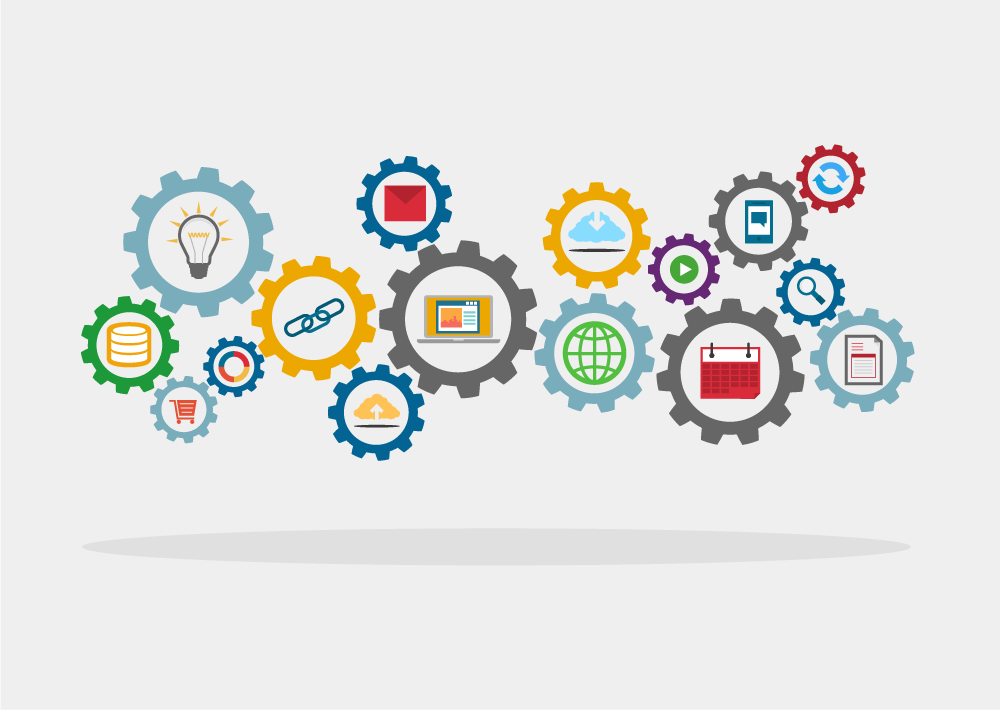Businesses are going through a complete digital transformation. Over the past few decades, software and new technology have become more important than ever for you to run an effective and efficient business. Whether you’re processing your data or analyzing different systems for productivity, it helps when everything is connected and integrated for you to successfully achieve your goals.
Application integration is like a spider web that connects all your different plot points. Any data and business processes from customer transactions to inventory management to program changes are connected to your single system thanks to data integration. This can benefit your workflow and help you see insights in a faster, more straightforward way. Overall, a better connection is the key to success. When you’re working off different applications or every single application on its own, you’re wasting time, energy, and money. Instead, invest in an integration platform that can transform the way your enterprise functions. Let’s break down the concept of application integration and look for the right solutions that can work for you.
What is application integration?

Application integration is the process of combining exchanging data and services between your applications to install better communication practices. Throughout your enterprise, you have a large number of systems, software programs, and data points that are constantly communicating. Processes aren’t as simple as they used to be. Before, you only needed one or two steps to understand everything. Now, with so much input from individual applications, you need a strong connector to help you understand the broader picture of your business process. Rather than having your data live in separate data silos, use a solution as a key element of your digital transformation for your business data.Utilizing a without code middleware with visual UI can make your venture application coordination measure more effective, especially when you are taking care of a few applications. The advantage of mix is that it takes out the need to physically enter information into every one of your applications, working on big business information dividing among your most basic applications. A benefit of incorporation middleware is that it tends to be on-reason or cloud-based, contingent upon your business prerequisites. You can check it here. Since we have gotten what venture application incorporation is, how about we examine the kinds of utilization mix.
How does the process work?

The application integration process works by taking out the middleman and integrating data without human interference. Before this digital transformation, you would have to manually combine and include different data points and complexities to best process them. Now, with the middleware technology that is application integration, everything happens automatically. This works by implementing API technology and allowing for event-driven architecture. This means your computer takes over and makes changes without waiting for your approval. Overall, the process simply advances data in more meaningful ways so you have an organized system to look at when you’re analyzing your business decisions.
While both these methodologies structure the key part of any powerful application combination organization, the second kind of utilization incorporation is thought about better as it is more versatile and can represent developing volumes without any problem. Physically composing codes to incorporate an expanding number of use workers can be tedious and blunder inclined.
Regardless, in the two cases, information access, investigation, and change are basic for application combination. Since, supposing that an application can’t move and grasp information from another application, irregularities can emerge and create setbacks for business measures, along these lines, passing up the advantages of mix. Consequently, whichever kind of mix your association utilizes, the ultimate objective is to interface applications for logical purposes.
What are the different formats of application integration?

There are a few different ways you can integrate your applications. Some may choose point-by-point integration where you individually connect each application. This can often get hard to manage as you scale the company. You can also look for specific enterprise-based solutions where everything easily connects back to the main spoke of your overall organization. Lastly, you can use an integration platform as a service (iPaaS) that works for your different implementation options and eliminates redundancy. This last option is cloud-based and connects your data, applications, and systems in a neat and easy way. Application mix is absurd without the utilization of an application programming interface or API. Programming interface is the arrangement of rules or conventions for building application programming. Its a strategy for correspondence that works with the connection among applications and framework programming. Moreover, it permits admittance to information caught in cloud sources. Programming interface permits adaptability and control for end-clients while guaranteeing that the first makers keep up with their application with no outside obstruction. Though, information incorporation includes solidification, relocation of information into a solitary archive or information distribution center. This clarifies the contrast between application incorporation versus information reconciliation.
Programming interface has for quite some time been near and utilized for the incorporation of on-premise based programming frameworks. These days, APIs are being utilized for various purposes, like continuous information recovery, framework mix, framework synchronization, and framework refreshes.
In what ways can application integration benefit your business?

When you’re looking to implement a new program for your business, you need to know what benefits you’ll get. Integration technology offers you a ton of new insights and saves you money and time. Beyond just getting connected applications, you’re eliminating the middle man and the need for busywork. Before, you may have had an employee whose job was to process all that data. With application integration, all that is happening automatically and your data sources are working better for you. The automation also makes your business more responsive and you can react to changes in real time. This helps you get ahead of the curve and be competitive in your market. A much of the time disregarded part of this kind of combination is identified with applications that are immovably associated with different frameworks, like ERP applications. They are associated as well as are dependent on each other to help a specific interaction. These applications become especially testing to coordinate, and don’t regularly react well to updates and changes, which cause IT reconciliation issues. The IT division likewise utilizes various sorts of framework combinations. Accordingly, these combinations are delicate and costly to keep up with. This is the place where application incorporation arrangements become possibly the most important factor and work on mix.








